7. Mudbound
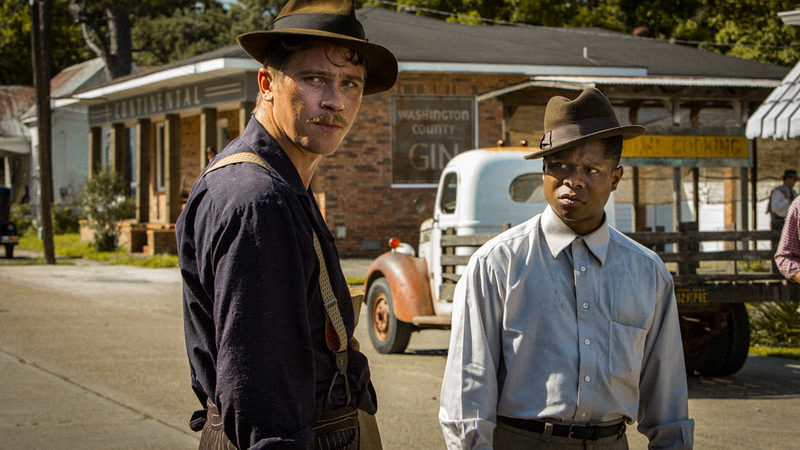
Director Dee Rees (who co-wrote along with Virgil Williams, based on Hillary Jordan’s 2008 novel) and cinematographer Rachel Morrison (Fruitvale Station) present a powerful, poignant, and near-tangible period drama in Mudbound. Prejudice is tackled dead-on in the Jim Crow South as two men––one white (Garrett Hedlund) , one black (Jason Mitchell)––return home from World War II to work on a farm in rural Mississippi, where they struggle to deal with PTSD (then called shellshock), racism and adjusting to life after war.
On the Mississippi Delta farm is Laura McAllan (Carey Mulligan) is trying to raise her children on her, and much of the tale is told from her perspective, though as the story progresses, so to does the cast of characters (Mary J. Blige and Rob Morgan are standouts in a great cast of standouts).
Both heartbreaking and powerfully absorbing, Mudbound is a layered work of artifice that doesn’t slip into maudlin melodrama and maintains a vivid, and poetic scope.
6. Call Me By Your Name
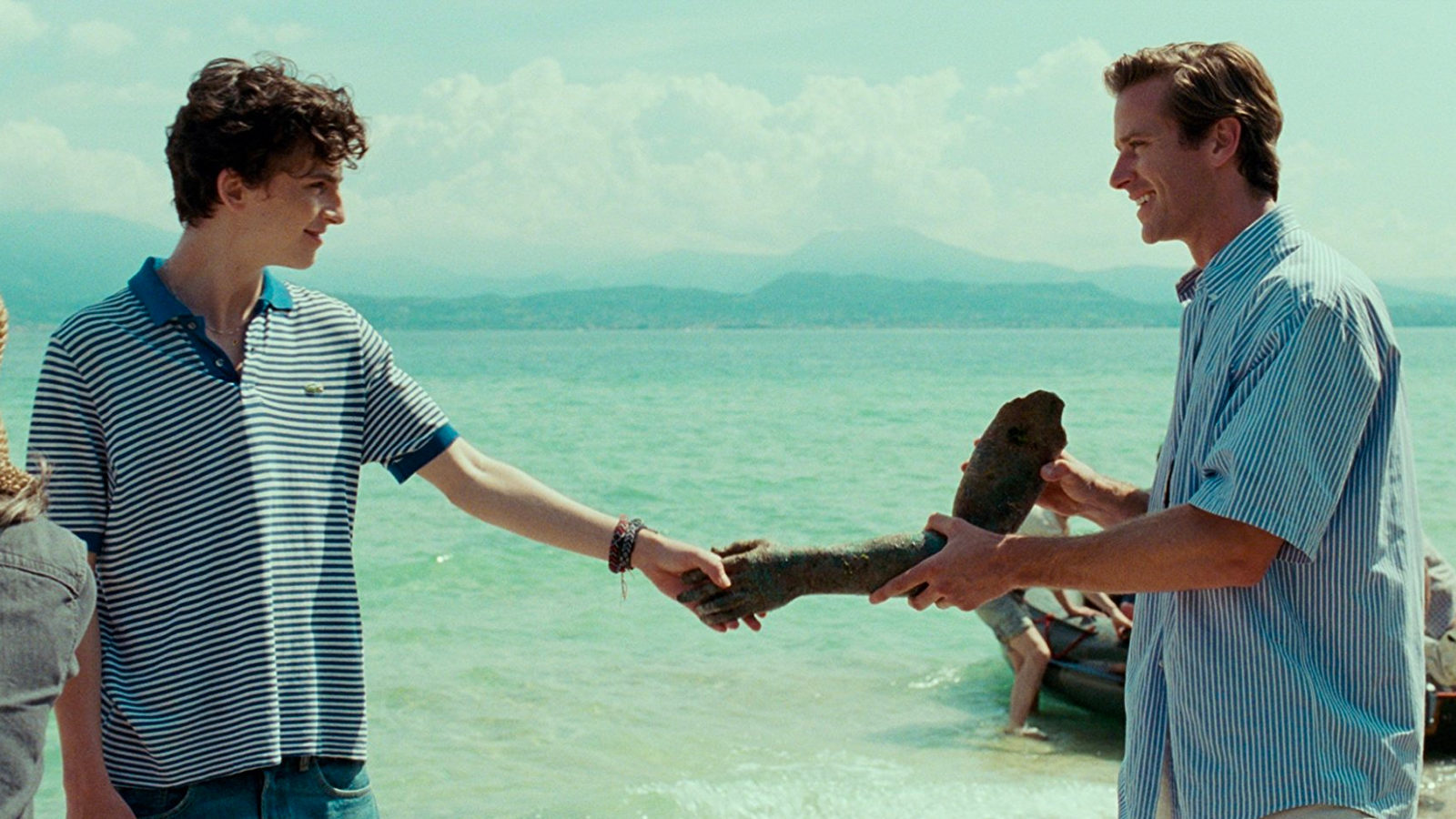
Luca Guadagnino’s Call Me By Your Name favors finesse, sparkle, and languid idle in this James Ivory scripted story (based off of André Aciman’s 2007 novel) of love, intimacy and longing between two men, and that said, never once does it feel any less than real and heart-rending.
An admirer of his fellow countryman Bernardo Bertolucci, it’s been suggested that Call Me By Your Name is Guadagnino’s Stealing Beauty, and that does ring rather true, it’s also the final entry in his thematic Desire trilogy, after I Am Love (2009) and A Bigger Splash (2015). Comparisons have also been drawn to last year’s elegiac gay masterpiece Moonlight, and that film’s director Barry Jenkins has said that “[Call Me Be Your Name] is a supremely delicate and humane work… An intellectually rigorous examination that never loses warmth.”
And warm it is as we get to know 17-year-old Elio Perlman (Timothée Chalamet), a Jewish American boy spending the endless-seeming summer days of 1983 with his family at their 17th-century villa in Lombardy, Italy. Enter the dreamy American Jewish grad student Oliver (Armie Hammer), who’s working as an intern for Elio’s archaeology professor father (Michael Stuhlbarg).
This is top tier art house cinema to be sure, and as fleeting as Elio and Oliver’s sun-soaked and starlit tryst may be, Call Me By Your Name will have you feeling every bit as cherished as they do. Superb.
5. Loving Vincent
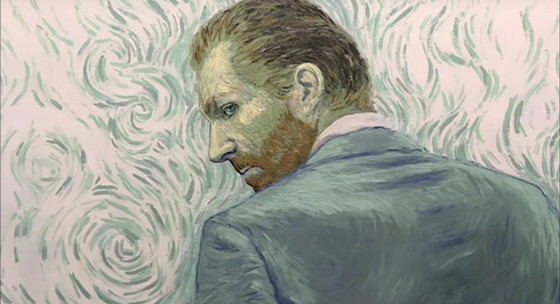
The story, a whodunit mystery surrounding the death of renowned Dutch Post-Impressionist painter Vincent van Gogh in 1890, Auvers-sur-Oise, France, takes the backseat to the staggeringly lovely animation in Loving Vincent. A painstaking labor of love from artist, writer and director Dorota Kobiela, co-director Hugh Welchman, and a tireless crew of 115 gifted painters/animators (the film consists of 65,000 frames in oil paints, on more than 850 canvases made over nine years) bring to life what’s been hailed as the world’s first fully painted motion picture.
Kobiela and Welchman manage the miraculous as they recreate many of van Gogh’s renowned canvasses –– the opening sequence where “Starry Night” twinkles and yearns to life before us is worth the cost of admission alone. While the actual story that’s unfolding before us is rather thin, it’s in the telling that Loving Vincent dazzles the eye as tableau after tableau takes its cues from Van Gogh’s paintings.
Ultimately, Loving Vincent is an inventive experimental film that takes considerable risks, but the breathing backgrounds, rolling landscapes, and seemingly endless visual splendors make this film, if nothing else, one of the year’s most beautiful.
4. The Lost City of Z
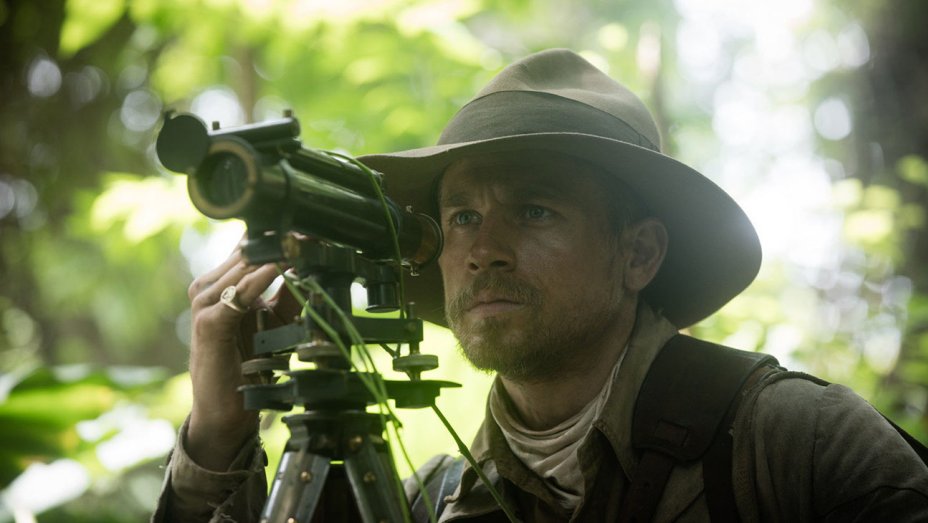
“What begins as an old-fashioned adventure tale subtly, almost imperceptibly morphs into something far richer, more mysterious and cosmic,” says Tim Grierson, film critic for The New Republic, adding that “by the time you realize the transformation has occurred, the movie has you in its clutches, and it doesn’t let go.”
James Gray’s jungle epic (based off of David Grann’s non-fiction novel) follows the driven explorer Captain Percy Fawcett (Charlie Hunnam), a man obsessed with finding archaeological evidence of a pre-colonial Amazonian city, and who led numerous expeditions to Brazil on either side of WWI.
Also central to the story is Fawcett’s wife, Nina (Sienna Miller) and fellow explorer, Henry Costin (Robert Pattinson) who join Fawcett on his Heart of Darkness journey, in what wondrously amounts to a patient, character-driven, classic adventure tale, the way Hollywood used to make them in their 70s heyday.
The vistas are large scale and rich, Darius Khondji’s (Delicatessen, Midnight in Paris) lensing has never been finer, in this bold, gorgeous, and a moving movie, which, as Toronto Star critic Peter Howell suggests, “eschews multiplex formulae in favor of the jungle of the mind, a much more fertile place to explore.”
3. The Shape of Water
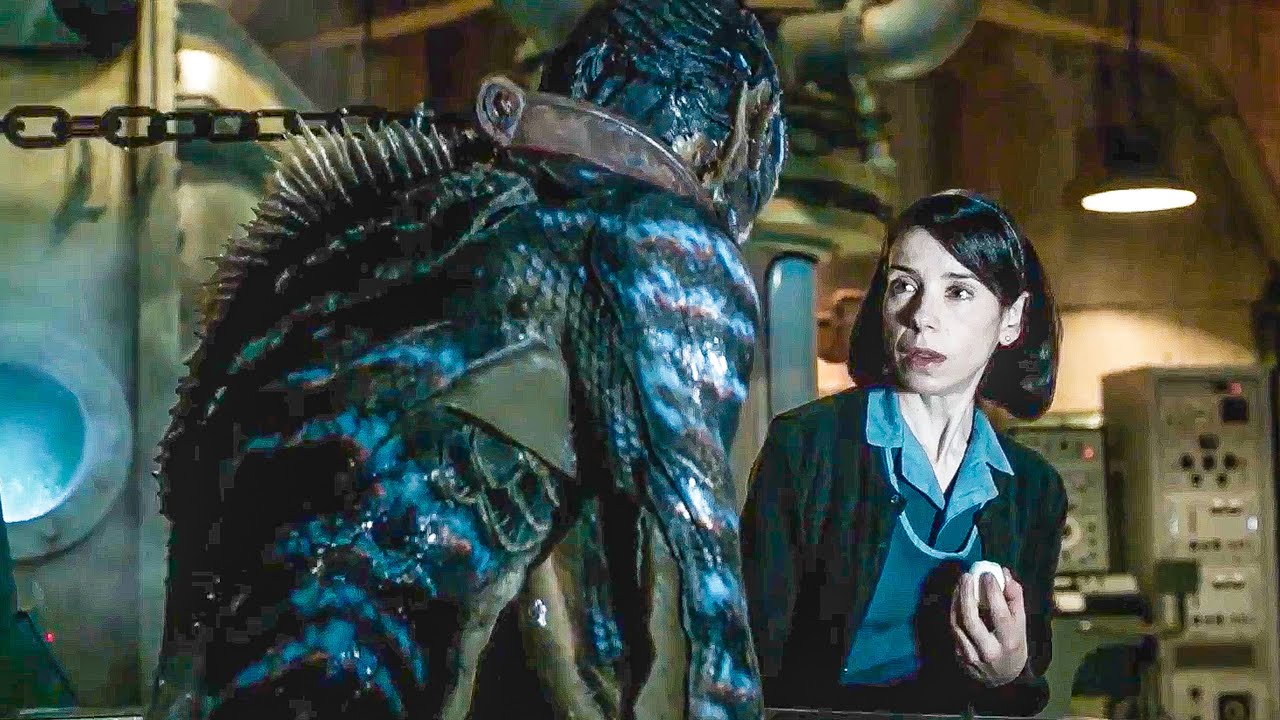
“Holy shit,” raved filmmaker Robert Rodriguez in a recent Twitter rant, “The Shape of Water is bold, breathless, heartfelt, visionary filmmaking from first frame to last!” Similar sentiments were enthused via social media from Logan director James Mangold who enthused “Wow! [Guillermo del Toro] thank you for your astounding & daring Shape of Water. You made such a devastating joyous personal moving humane fanciful honest beautifully crafted complex intimate imaginative romantic spectacle [sic]. My hat is off.”
Yes, the newest film from marvellous Mexican filmmaker Guillermo del Toro (The Devil’s Backbone [2001], Pan’s Labyrinth [2006]) is also his greatest achievement to date, the fantastical pièce de résistance The Shape of Water.
Arriving in cinemas when it does, at a time of growing intolerance, much of del Toro’s film feels like it is very much a movie of it’s moment and time, and maybe this is largely because we need a movie that is this wonderfully romantic and this unusually lustful like we need an inoculation against the toxic news-cycle of the day and the easily upsetting parameters therein.
The Shape of Water, while set in 1962 Baltimore still strikes out as a romantic modern fairy tale (The Purple Rose of Cairo + La Belle et la Bête + The Creature from the Black Lagoon) that wisely knits the never-ceasing discrimination and disrespect minority groups face all across North America.
Buoyed with dignity, grace, and grievous heartbreak from the astounding Sally Hawkins (give this woman every acting award and distinction under the sun, please!), this movie will have you believe without batting a lash that a mute woman, Elisa Esposito (Hawkins) and a hard-boiled egg-devouring piscine amphibious humanoid (Doug Jones) from the uncharted depths of the Amazon can fall in love (and that you’ll root for them every unsteady step of the way).
With a perfect woozy score from Alexandre Desplat, expert lensing from cinematographer Dan Laustsen, dazzling production design from Paul Austerberry, and sensational special makeup effects by Jeff Derushie (and others), this empathetic, awe-inspiring ode to Old Hollywood and the heartstrings is del Toro’s generous gift to us all.
2. Twin Peaks: The Return
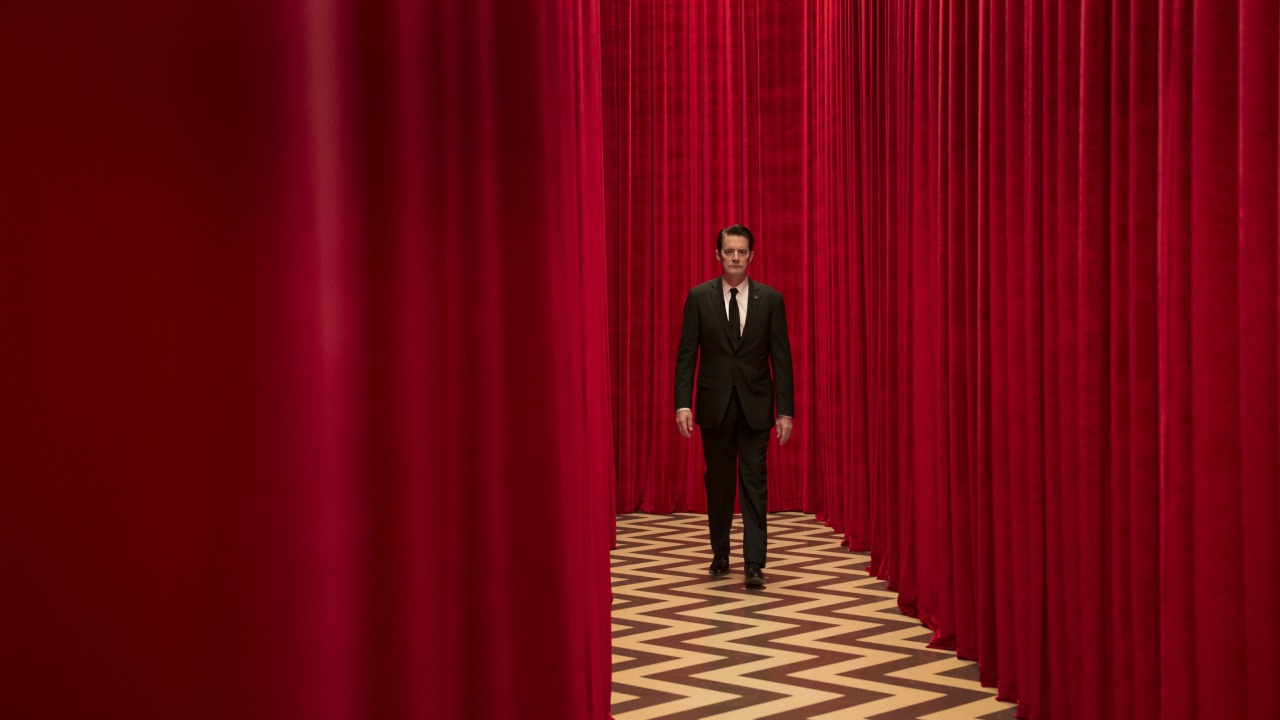
“Cinema and television have become the same thing,” says Francis Ford Coppola in a recent interview. “Those wonderful long television shows –– starting with [The] Sopranos, Breaking Bad –– those are movies, so it’s all cinema. There is no more ‘television’ as such. Cinema can be seen in the home, it can be seen in the theater, it can be and will be seen in both the home and the theater, and it can be a minute or less, or it could be 90 hours or more.”
The most adventurous use of the long form comes from cinematic and television icon David Lynch. Reconnected with Mark Frost for eighteen hours of jaw-dropping entertainment, somewhat serialized in a fashion comparable perhaps to to Fassbinder’s Berlin Alexanderplatz (1980), Amiel and Potter’s The Singing Detective (1986) or Kieślowski’s Dekalog (1989), and certainly the most alternatingly profound, puzzling, frightening, fun, and most assuredly unforgettable television/cinema of 2017.
Picking up 25 years after the murder of homecoming queen/troubled teen Laura Palmer (Sheryl Lee) in the quaint yet mysterious northwestern hamlet of Twin Peaks, Special Agent Dale Cooper (Kyle MacLachlan) begins a bizarro odyssey that will return him (eventually) to Twin Peaks and environs. And as The Return untangles before the viewer, the show admittedly hits a few valleys amongst its mighty peaks –– like many of Lynch’s most daring works, this is a flawed perfection –– but it’s frequently breathtaking, monstrous and sublime, and the narrative eddies and flows through many traversable plains.
Especially memorable is the staggering rearrangement and recontextualization that occupies Episode 8, one of the most stunning hours of television ever produced. This isn’t hyperbole, it’s verisimilitude. The 1945 Trinity bomb test reimagines Twin Peaks’ lore in mind-bending fashion complete with the frenzy of a mushroom burst glimpsed like a dripping abstract expressionist canvas, a ghastly mob of Woodsmen (“Got a light?”), the nascency of the Black Lodge, the eerie birth of BOB (Frank Silva, who passed away in 1995 but creatively resurrected in a creepy cameo), and more.
For all of its mob rule oddness and rebelliousness, Twin Peaks: The Return isn’t all darkness and dirge. There’s humor in abundance (Andy and Lucy Brennan [Harry Goaz and Kimmy Robertson] may bid a teary farewell to their motorcycle-lovin’, Dharma-chasin’, leather clad son Wally [Michael Cera] but not before he imparts this pearl, “My shadow is always with me. Sometimes ahead. Sometimes behind. Sometimes to the left. Sometimes to the right. Except on cloudy days… or at night.”), sympathy and reconnection (Everett McGill’s Ed and Peggy Lipton’s Norma find lovely recompense, for instance), and any show that gives us another chance to hear Harry Dean Stanton sing one last time, well how swell is that?
We’ll be dissecting, discussing, marvelling over, puzzling out, and re-watching this visually varied and verdant show for some time. From Frost and Lynch we’ve received a very generous, and occasionally dangerous gift. Thank you, kind sirs!
1. Blade Runner 2049
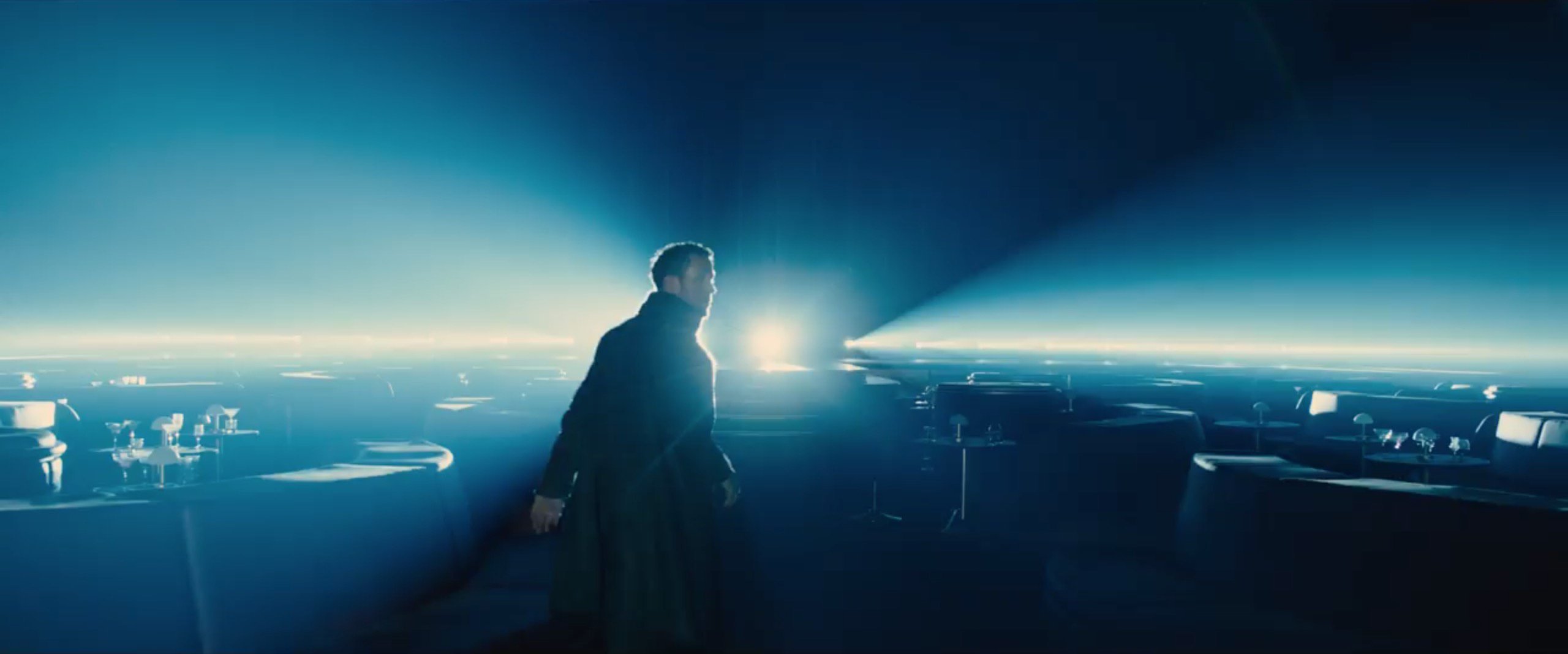
“From the grayed-out countrysides over which the sky has closed like a lid; to the drizzly neon decadence of Los Angeles; to the Ozymandian wreckage of Las Vegas––[Blade Runner 2049] is a visual splendor of the first order,” gushed The Atlantic critic Christopher Orr.
Working closely with screenwriters Hampton Fancher (who co-wrote Ridley Scott’s original Blade Runner back in 1982) and Michael Green, and his sensational cinematographer Roger Deakins, visionary Canadian filmmaker Denis Villeneuve did the near impossible task of following up Scott’s Blade Runner with a sequel that retains much of the tactile splendor and future noir poetry of the original while manufacturing an objet d’art that is perhaps even more emotionally engaging and narratively a more complete experience.
Unspooling some thirty years after the first film, Ryan Gosling is K, a replicant who hunts rogue replicants and, like Rick Deckard (Harrison Ford, excellent in his best role in decades) before him, retires his quarry using deadly means. When K discovers evidence suggesting that a replicant has reproduced and had a child, he is charged with murdering the child to prevent a replicant uprising.
While 2049 certainly lacks the iconic villains of the original (Jared Leto’s Niander Wallace and Sylvia Hoeks’ Luv are intriguing characters but lack the depth, dynamism, and grandeur of Rutger Hauer’s Roy Batty and Daryl Hannah’s Pris), it still offers up an emotive, stirring, and stunning spectacle. The dystopian future presented onscreen is equal parts gorgeous and ghoulish.
“A meditative and moving film,” suggests Tribune’s KAtie Walsh, adding that the film is “sumptuously photographed by legendary cinematographer Roger Deakins in the finest and most astonishing work of his career.” A sublimely articulated mindbender, seductively crafted, steeped in mystery, and one that teases the audience with numerous ambiguities, and needling puzzles, Blade Runner 2049 is one of speculative fiction’s crown jewels. This is a film that, like its predecessor, will be discussed, dissected, revisited and extolled for decades to come. Dazzling.
Honorable Mention: The Beguiled (directed by Sofia Coppola), Darkest Hour (directed by Joe Wright), Guardians of the Galaxy Vol. 2 (directed by James Gunn), Kékszakállú (directed by Gastón Solnicki), Let the Sunshine In (directed by Claire Denis), Logan (directed by James Mangold), mother! (directed by Darren Aronofsky), Nocturama (directed by Bertrand Bonello), Western (directed by Valeska Grisebach), Zama (directed by Lucrecia Martel).
Author Bio: Shane Scott-Travis is a film critic, screenwriter, comic book author/illustrator and cineaste. Currently residing in Vancouver, Canada, Shane can often be found at the cinema, the dog park, or off in a corner someplace, paraphrasing Groucho Marx. Follow Shane on Twitter @ShaneScottravis.